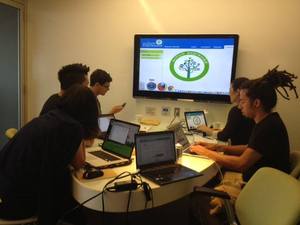Managing a Startup Team
When I won my first $10,000 to build Autism Expressed, I needed to find people who could help carry out my vision. Talent, I quickly learned, is hard to find—especially with very little money to pay for it. I contracted three different animators before I found the right one. I juggled a bunch of interns and project managed four developers, earning many grey hairs along the way.
Working with others and hiring people for contracts is certainly a learning process of negotiating and managing expectations, especially when you’re new to the startup game. Since Autism Expressed has decided to grow before taking on partners and capital, we are not fully funded and therefore, are not in a position to have “full time” employees and a big lofty office space.
While we don’t have a foosball table, we do have an amazing team working in spaces that best suit our needs. For those of us who are local to Philadelphia, which I call home, we work at Quorum at The Science Center. However, for the team members working from New York, California, and New Jersey, we carry out meetings in a Google Hangout. In this space, the team participates in a daily ‘standup’ meeting. Standup is a type of meeting used in agile software development that facilitates quick, focused communication. The daily meeting poses three questions: what did you work on yesterday? What did you work on today? What problems have you encountered? The idea is that by having everyone stand up, the meeting is quick, focused and allots the opportunity for team members to work with each other to overcome any barriers preventing progress.
Having clear, direct communication is important to any company; however the process can be even more challenging when team members are not full time employees or collaborating together in the same workspace. Nonetheless, we have been able to move things forward, reiterating to make improvements to our process along the way. Utilizing Google Docs, we work together to track sprints, deadlines, deliverables, milestones, all while reflecting on best practices and needed improvements. It’s taken some time and iteration, but today, our content production process is tight.
Autism Expressed is growing. Establishing a baseline for team communication and management will help us integrate new team roles—like a sales rep, which we are going to need next! As the leader of this company, I manage the team by motivating and empowering each member to be autonomous. This takes a lot of structure and consistency to do well. Luckily, my role as a teacher is similar and I’ve had a lot of practice.
Photos couresy of Jessica Stoller and J.J. Sereday


